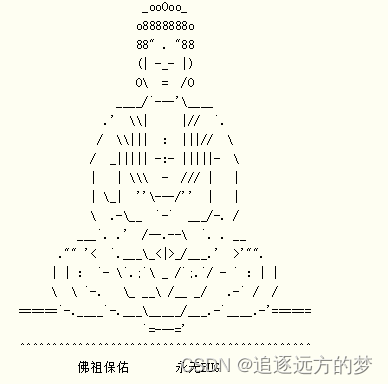第1天----验证一个字符串是否是另一个字符串的子串
本文我们将学习如何去验证一个字符串是否是另一个字符串的子串。
一、小试牛刀:
题目描述
输入两个字符串,验证其中一个串是否为另一个串的子串。输入格式
两行,每行一个字符串。输出格式
若第一个串 s 1 是第二个串 s 2 的子串,则输出(s1) is substring of (s2);
否则,若第二个串 s 2是第一个串 s 1的子串,输出(s2) is substring of (s1);
否则,输出 No substring。
输入输出样例:
输入 1
abc
dddncabca
输出 1
abc is substring of dddncabca
输入2
aaa
bbb
输出 2
No substring
说明/提示:
对于 100%的数据,字符串长度在 20 以内。
方法一:
直接按照题目的思路来实现
- 此方法虽然代码量大,但并不难想,完全是按照题目的要求来实现,所以不做过多解释。
#include方法二:
利用cstring 库中的 strstr 函数查找:
可以先用字符数组存字符串,然后查找子串可以使用
cstring库中的strstr函数,未找到时返回NULL。 先查找b是否是a的子串,再查找a是否是b的子串。如果都不是,输出"No substring"。
- 代码如下:
#include方法三:
利用 string 库里的函数来实现。
比如此时我们有一个
string类型的变量str:string str="hello world";
然后我们可以调用find函数来在str中寻找是否含有子串"hello":str.find("hello")
如果该函数的返回值为str.npos(表示无效),则表示在str中不存在该子串,否则存在。
- 代码如下:
#include 方法四:
使用C++string库中的std::find()函数也可以实现字符串的查找操作(此方法和方法三有点类似)
std::find()函数可以在一个字符串中查找另一个字符串的第一次出现的位置
- 注意
find函数若未找到的返回值为string::npos
代码如下:
#include二、拓展讲解:
1. strstr()函数:
strstr函数是C语言中的字符串处理函数,用于在一个字符串中查找另一个字符串的第一次出现的位置。它的原型如下:char *strstr(const char *haystack, const char *needle);
其中,参数haystack是源字符串,参数needle是要查找的目标字符串。
- 函数的返回值是一个指向找到的目标字符串在原字符串中的首个字符的指针。如果未找到目标字符串,则返回NULL。
以下是一个使用strstr函数的例子:
#include 输出结果为:
'world' found in 'Hello, world!' at position 7
- 这个例子中,
strstr函数找到了字符串"world"在字符串"Hello, world!"中的位置,并返回了指向该位置的指针。
2. std::find()函数:
C++中的string库中的
std::find()函数也可以在一个字符串中查找另一个字符串的第一次出现的位置。并且std::string::find()函数会返回一个位置索引,如果找不到子串,则返回std::string::npos。
- 在C++中,
std::string::npos是一个特殊的静态成员变量,它表示字符串中不存在指定的子串。
#include 输出结果为:
'world' found in 'Hello, world!' at position 7
- 这个例子中,
std::find()函数找到了字符串"world"在字符串"Hello, world!"中的位置,并返回了该位置的索引。如果未找到目标字符串,则返回std::string::npos。
3. 域解析符:
- 聪明的你可能已经发现了,上面的方法三和方法四其实是一样的,而这将关系到作用域的问题。
域解析符(Scope resolution operator)是
C++中的一个运算符,用于访问命名空间、类、结构体、枚举等作用域内的成员。
- 域解析符使用两个冒号
::表示,语法形式为命名空间名::成员名或类名::成员名。
以下是一些使用域解析符的示例:
- 访问命名空间的成员:
namespace MyNamespace {
int value = 10;
}
int main() {
std::cout << MyNamespace::value << std::endl;
return 0;
}
- 访问类的静态成员:
class MyClass {
public:
static int value;
};
int MyClass::value = 20;
int main() {
std::cout << MyClass::value << std::endl;
return 0;
}
- 访问类的成员函数:
class MyClass {
public:
void printHello() {
std::cout << "Hello" << std::endl;
}
};
int main() {
MyClass obj;
obj.printHello();
return 0;
}
- 在上述示例中,域解析符用于访问命名空间的成员、类的静态成员和类的成员函数。它可以帮助我们在不同的作用域中访问到所需的成员。
因此,a.find(b) != a.npos的判断条件也是正确的(a.npos其实就等同于string::npos),它用于判断字符串a中是否存在子串b。如果子串b存在于字符串a中,a.find(b)的返回值不等于std::string::npos,条件成立;否则,条件不成立。

